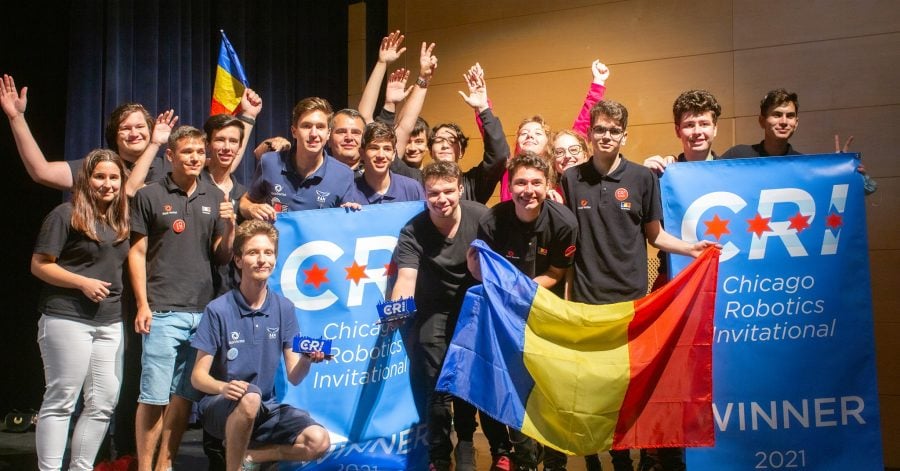In July 2021, the Romanian robotics team AutoVortex won first place at the International Robotics Championship in Chicago. This is the first time in 30 years when a team outside the United States wins this grande finale. It is the product of a lot of passion, hard effort, and an appetite for innovation which the Romanian high school team has been cultivating in the past 10 years.
A team of young innovators
What does the AutoVortex team do? They build robots and win competitions all over the world. They aim to democratise robotics by inspiring a new generation of technology leaders. And they bring together some of the most creative and innovative young minds in Romania and the world, judging by their achievements.
Back in 2012, the Romanian robotics team finished second after the US in the international championship of the First Tech Challenge. This marked the beginning of a journey full of hard effort and recognition for AutoVortex. In 2016, AutoVortex was winning the gold medal at the robotics competition First Tech Challenge in South Korea. Over the years, they also participated in robotic competitions in the Netherlands, Germany, and France.
Fast-forwarding to 2021, they do it again, breaking the record of cumulated points in the process, according to their announcement on the Facebook page.
This year’s team was coordinated by PhD assistant professor Panea Ionut Valentin, working at the Academy of Economic Studies in Bucharest, and mentored by Ion Rareş Ştefan.
It was composed of high school students Cudrici Dimitrie Sebastian, Iacob Ana Maria, Cezar Andrei Dunuţă, Brînzan Victor, Radu Andrei Laurenţiu, Greek Carina Gabriela, Amariei Claudia Catrinel, Milea Răzvan Iacob, Vasile Theodor Adrian, Caraenache Ştefan, Ungureanu Radu, Ungureanu Victor Bogdan, Rusu Luca, Vişoiu Mihnea, and Melnic Mihai.
A formula that prepares future generations to work with robots
For the AutoVortex robotics team, the goal is to learn to build and program robots. To that end, they learn to apply concepts from STEM (Science, Technology, Engineering, and Mathematics), to create the robot chassis, process metals and plastics, use specific tools and equipment, and the latest robotics innovations. They also work with PLA, ABS and FLEXI filaments and specialized software for printing previously 3D-modelled projects. Finally, students learn to program in JAVA, preparing the robots for the autonomous periods and teleoperation when the robot is under the control of 2 drivers.
But apart from exercising their STEM abilities, students get to apply their knowledge in a fun and adrenaline-fuelled setting – they build robots with which they participate in various competitive games and challenges. One of the goals of the program is to get a larger audience familiarized with robotics, but also overall engineering and technology innovations.
Such programs are very much needed in Romania’s education system, which does not have a good track record at encouraging creativity, innovation, or science applications. Even so, it appears the country’s young minds are naturally inclined at excelling in emerging tech fields such as robotics.








